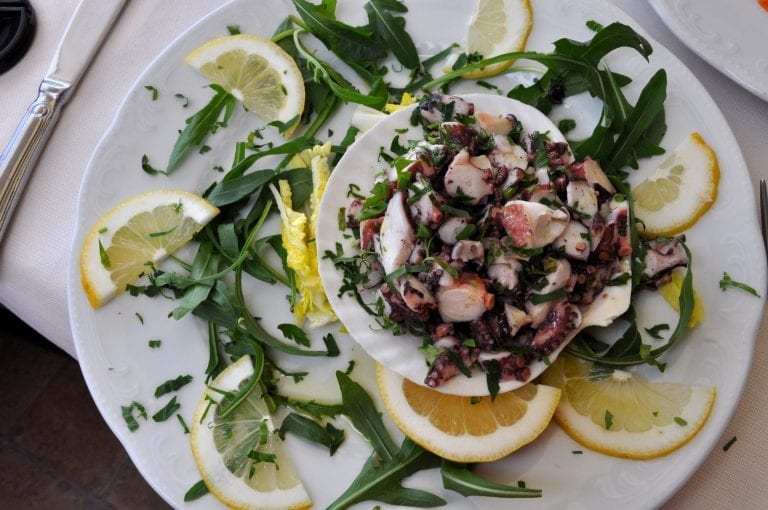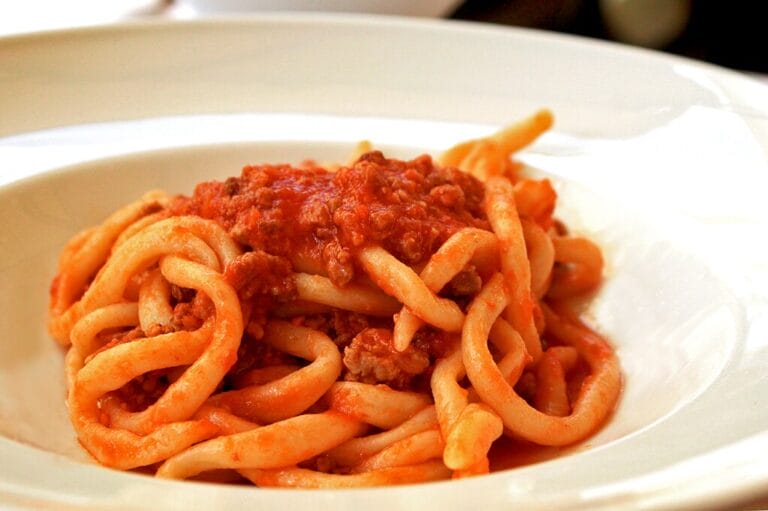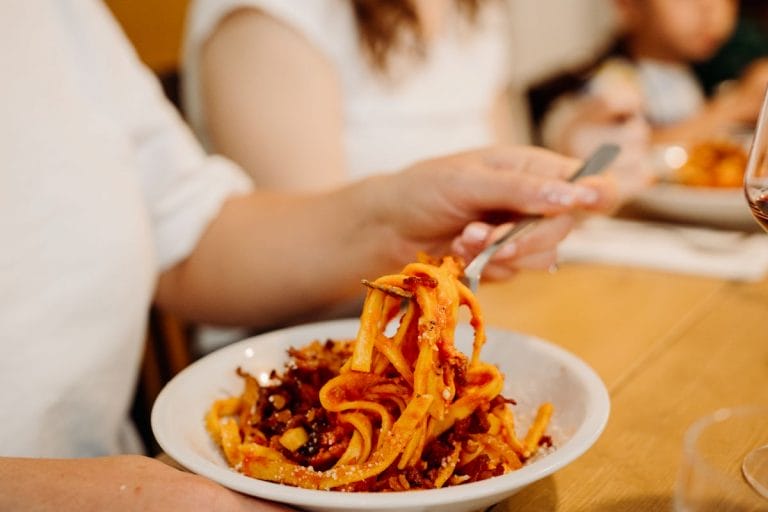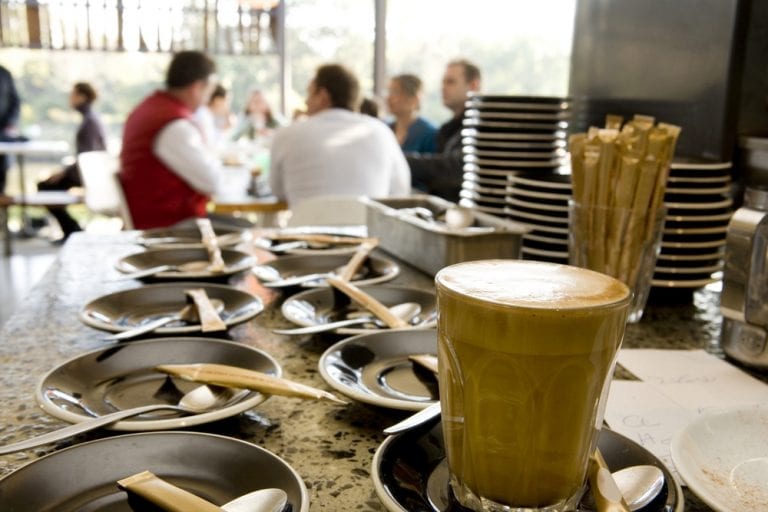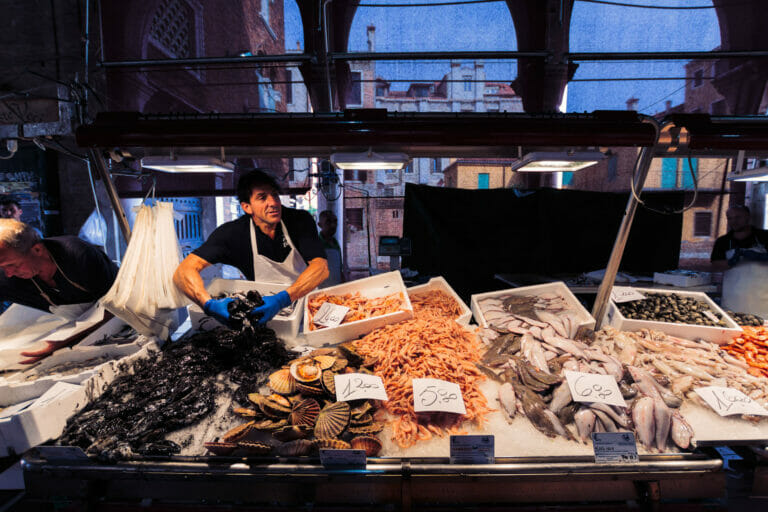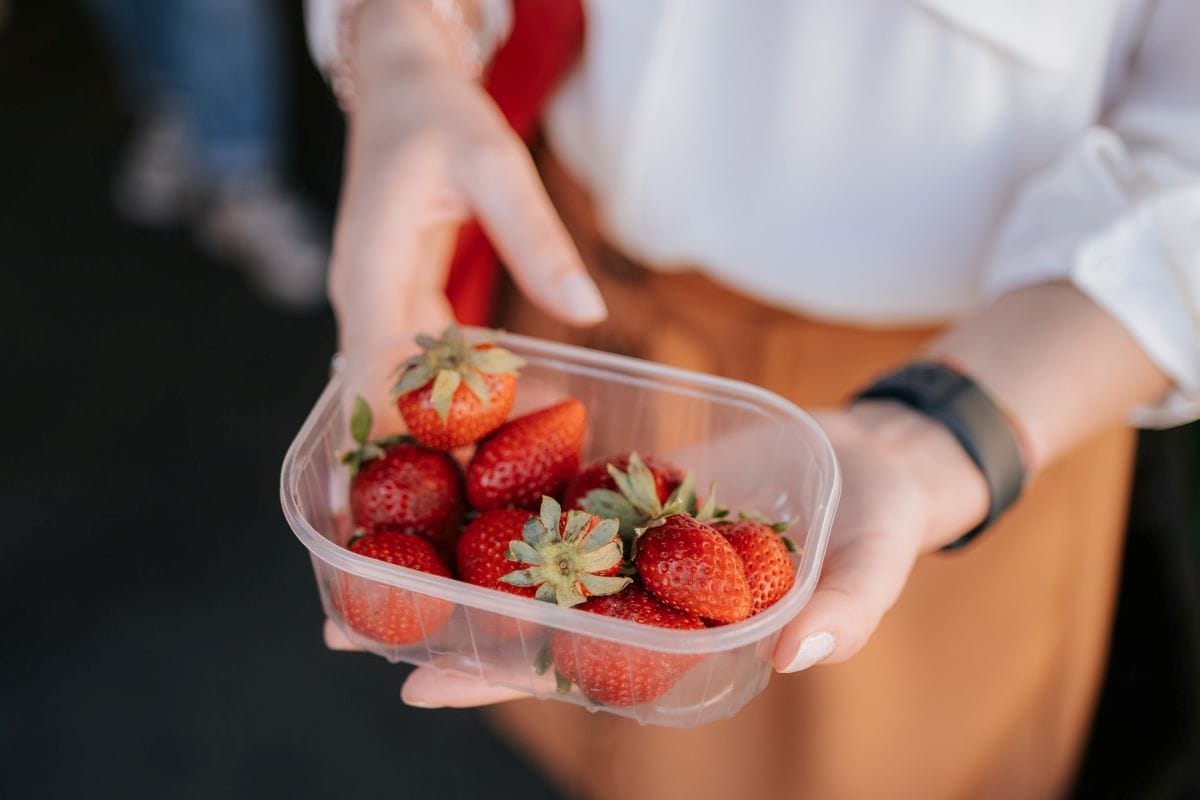
Eating in Italy is one of the great joys of visiting the country. As one of the world’s most beloved cuisines, the secret of Italian food lies in its local, and, most importantly, seasonal ingredients. Eating seasonally in Italy means you’re eating fresh ingredients at the height of their flavor. No jarred-for-years or deep-freeze ingredients here; if you order the right ingredients in the right months you’re sure to experience the very best of Italian cuisine.
For Italians, eating seasonally is a way of life that borders on a sacred rite. Many would never consider nibbling on a tomato bruschetta in January or tucking into roasted porcini in July. Of course, no one will hold it against you if you want to indulge in some classic Italian dishes despite their being out of season when you visit. But if you want to sample the heart and soul of what makes Italian food divine, you have to eat what’s in season.
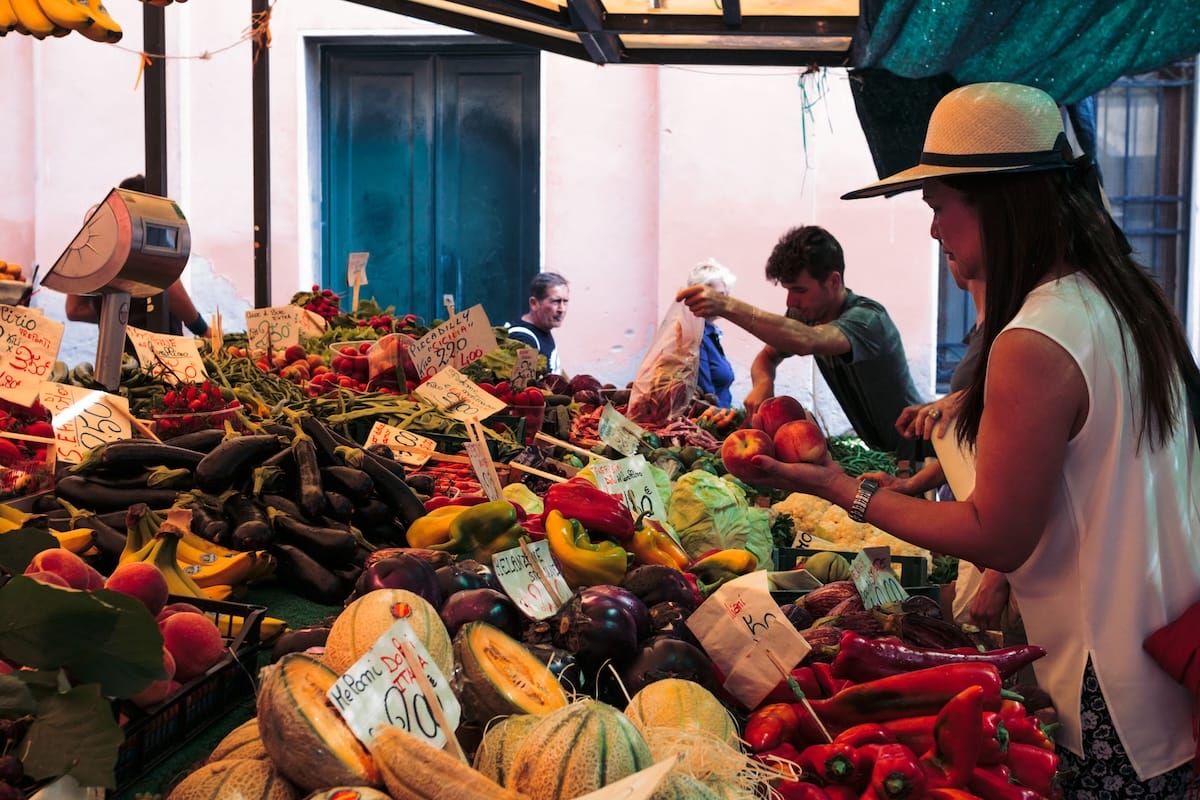
One of the best places to learn what’s in season is at the local markets.
Table of Contents
ToggleGeneral Tips on Seasonal Eating in Italy:
- Root vegetables like carrots, potatoes and fennel are staples in the colder months, and fresh leafy greens only hit plates in the springtime.
- Summer is the best time for most, but not all, fruits. Melons are the big draw this time of year.
- The fall harvest in Italy is similar to that of the United States – think grapes, apples, squash, mushrooms – but in Italy you also get exquisite truffles! Chestnuts are the other most evocative symbol of autumn in Italy.
- Fish have their own seasons – check out this basic guide on buying seafood by the season.
If you want to experience seasonal eating in Italy firsthand, why not join us on a food tour? Our food and market tours in Rome, Florence, Venice, and Bologna, will take you to our favorite traditional marketplaces in each city, introduce you to our friends behind the stalls, and share some of their incredible seasonal produce with you.
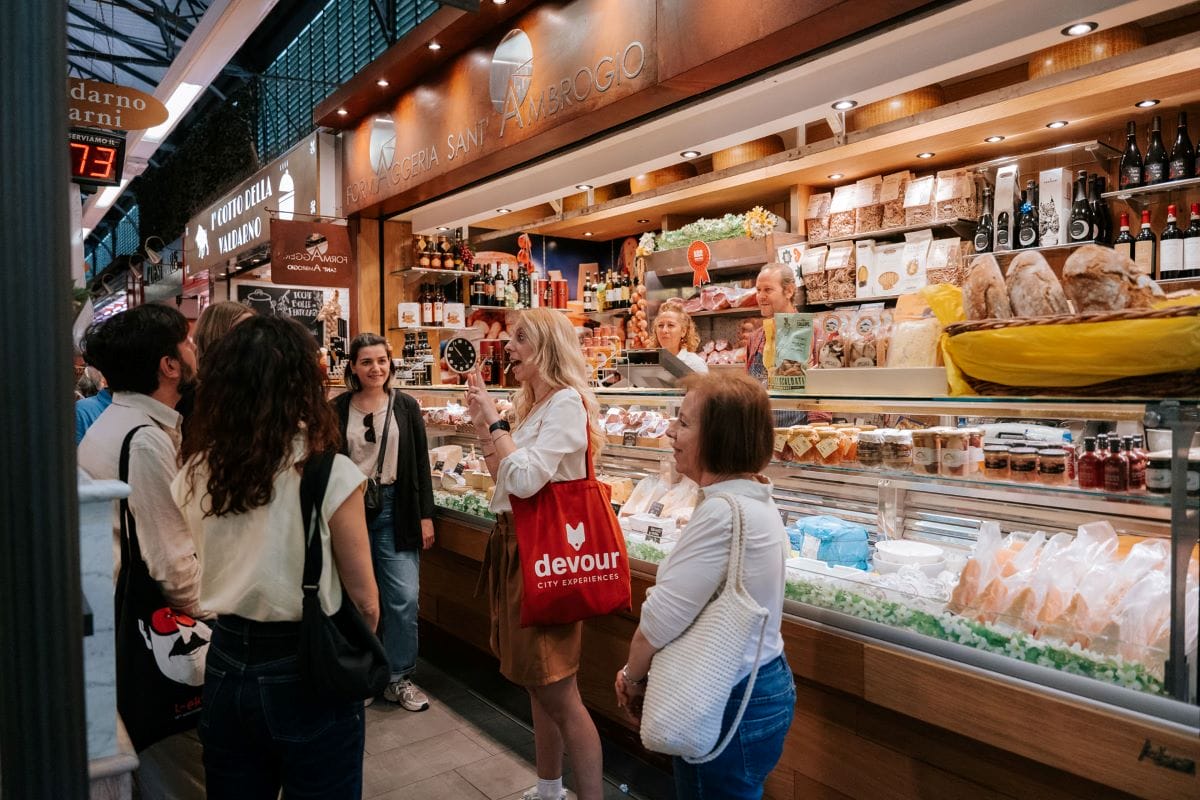
Strolling through local markets is a wonderful way to uncover any city’s culinary secrets.
Winter
What’s in season: kale (cavolo riccio), potatoes (patate), broccoli (broccoli), artichokes (carciofi), thistle (cardo), cauliflower (cavolfiore), cabbage (cavolo), fennel (finocchio), onions (cipolle), spinach (spinaci), carrots (carote), beans (fagioli) and lentils (lenticchie), radicchio (radicchio), oranges (arancie), clementines (clementine), mandarins (mandarini), persimmons (cachi), pomegranates (melagrane), pears (pere), kiwis (kiwi), almonds (mandorle)
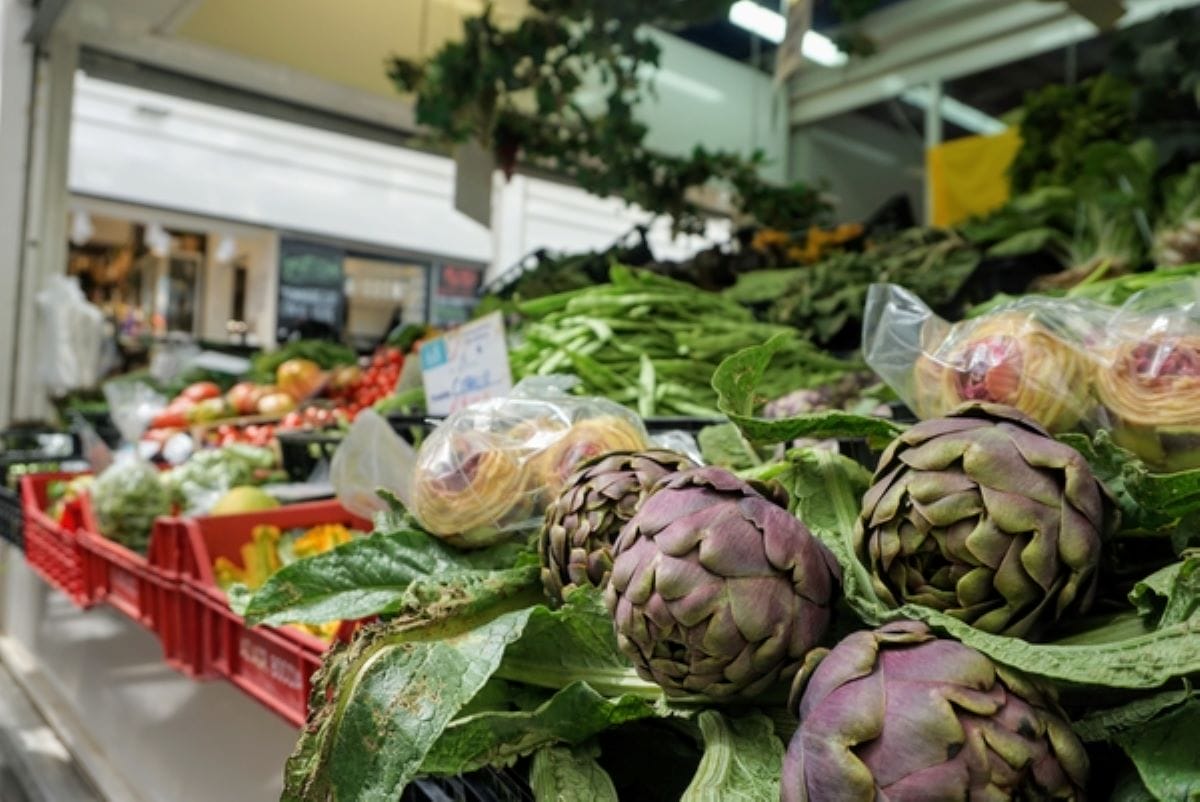
Braised Roman-style artichokes are one of the best things about visiting Italy in winter.
Winter food is mostly a continuation of the stronger autumn harvests that continue to grow, but there are also some unexpected veggies that ripen even in the thick of the coldest months. Eating in Italy in the winter is all about sniffing out these hearty gems: cabbage, cavolo nero, kale, and cauliflower are perfect in hot soups while carrots, fennel, lettuce, and radicchio add some color to the season.
December
Italian tradition has it that the best, most flavorful cabbage is harvested after a frost. This means that the markets and restaurants fill up with the stuff after the first frost of the year. Look out for the famous casseoula in Lombardia or gobble up some of the best sauerkraut you’ll ever have in cities and towns throughout the Dolomites. Another stunningly good veggie that makes its debut in December is radicchio. It adds a bitter, spicy note to salads and can also take center stage when grilled with lemon and parmesan shavings. For a special, if not particularly healthy, treat you can’t miss the decadent radicchio al lardo – radicchio leaves dressed in pig fat.
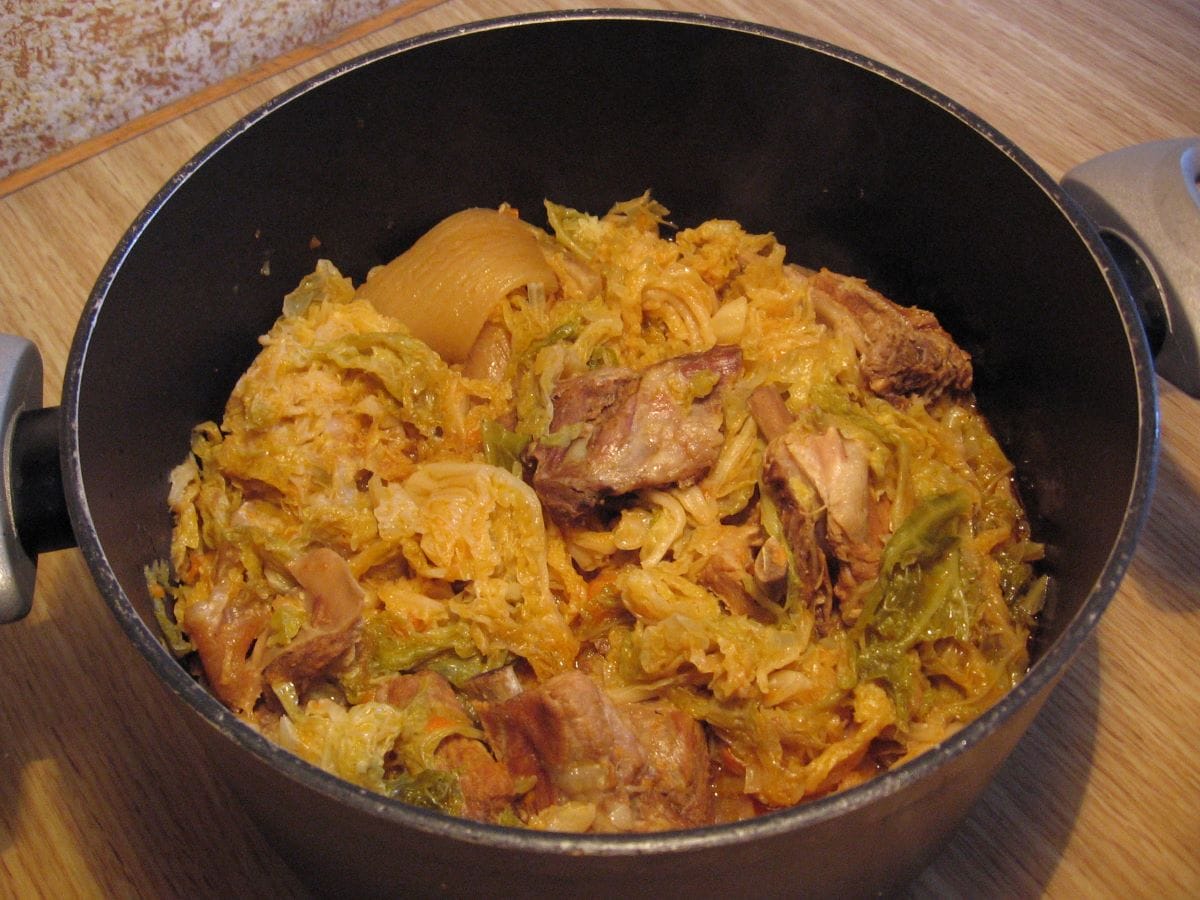
Winter in Lombardy isn’t complete without a hearty bowl of casseoula. Photo credit: Remulazz
January
Oranges are one of the simple pleasures of eating in Italy in February. Grown predominately in Sicily’s cradle of citrus, the fabled Conca d’Oro, both blood oranges and, er, orange oranges add a sunny burst of citrus to the often-heavy foods of winter –not to mention vitamin C! Get a fresh spremuta d’arancia (freshly squeezed orange juice) at a café during January and you’ll learn exactly why Sicily is still considered one of the world’s premier citrus growers. You’ll also find an abundance of clementines and mandarins during this period, which are especially good in desserts and as gelato flavors.
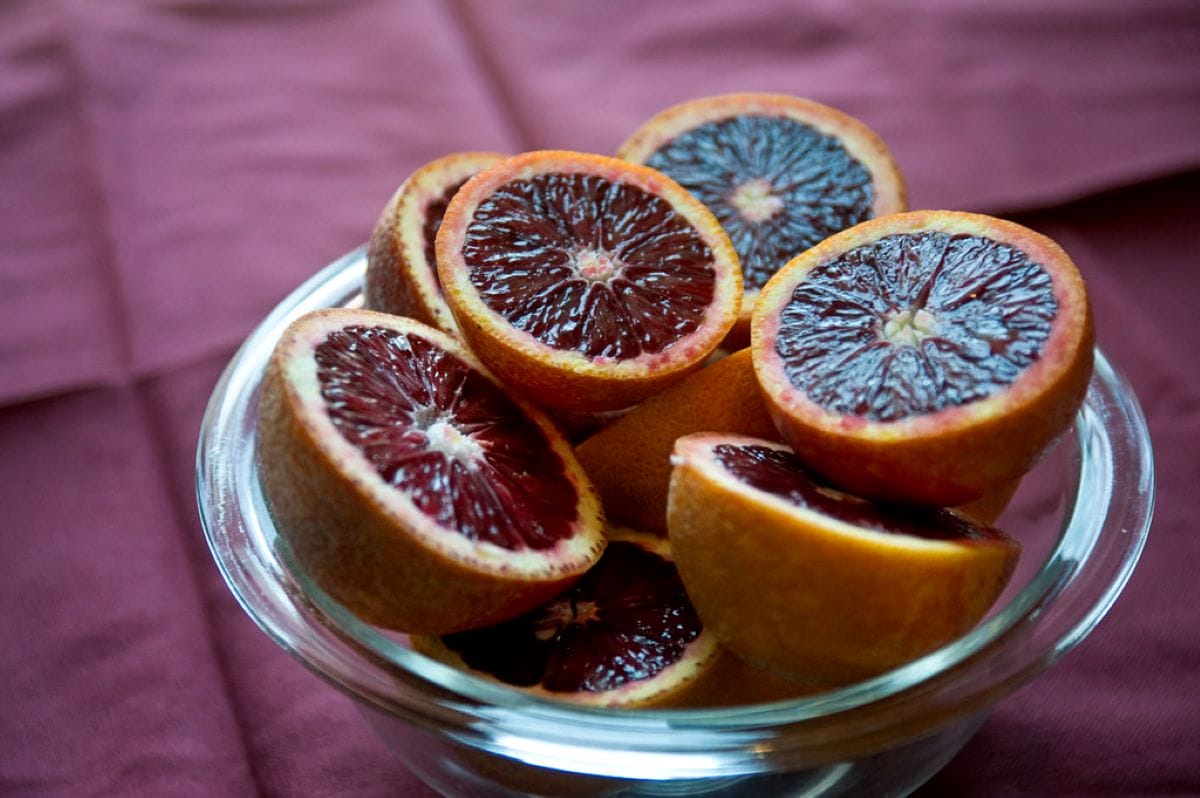
Blood oranges are a great way to add some vitamin C during the dreary winter months. Photo credit: chriscook04
Insider’s tip: Blood oranges from Sicily are widely considered among best in the world due to the very distinct microclimate of the Conca d’Oro as well as certain qualities in the soil. When you eat one in season you experience in one of the greatest and most authentic culinary pleasures from southern Italy.
February
February continues the winter traditions of cabbage, lentils, spinach and oranges. But two more stars arrive on the scene: beautiful bunches of broccoli and fennel, which grow in abundance this time of year. Though not used as much abroad, fennel is a staple of Italian cooking and a flavor that you absolutely must try when you visit. You’ll find it flavoring bread or crackers, soups, and salads, or simply cooked in olive oil and served as a side. Eat broccoli rabe in the famous Pugliese favorite orecchiette con le cime di rapa.
You’ll also find succulent almonds this month, usually decorating pies and cakes. Another sweet treat – one of our personal favorites – is the heavenly combination of chocolate and pears.
Insider’s tip: The first few months of the year is a great time to visit Italy. The holiday crowds are gone and most cities are taking a breather before the spring/summer tourism starts. Check out one of our Italian walking tours to make the most of your visit.
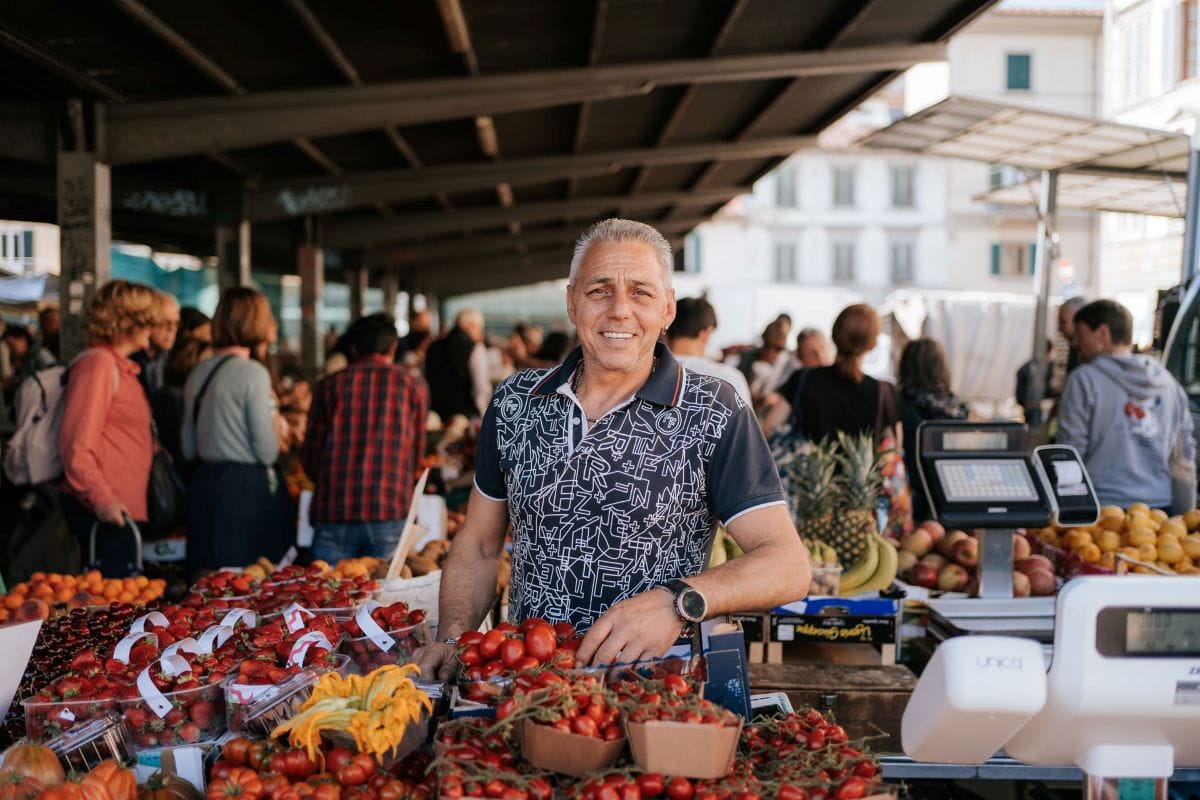
While perusing the market, try to strike up a conversation with the vendor. They’ll be able to tell you what’s in season.
Spring
What’s in season: fava beans (fave), asparagus (asparagi), artichokes (carciofi), zucchini flowers (fiori di zucca), spring peas (piselli), leeks (porri), beets (barbabietole), beans (fagioli), garlic (aglio), lemons (limoni), kiwi (kiwi), strawberries (fragole), cherries (ciliegie)
Vegetable gardens burst into bloom when spring comes around and eating in Italy enters a sort of extended party phase that lasts through the fall. Delicate vegetables like asparagus, zucchini flowers, and spring peas are classic spring fare. Many more fruits also start to come into season, most notably, strawberries, which flavor everything from tarts to gelato, and are also delicious all on their own. Spring marks the end of heavy root dishes and the start of lighter meals, prepared fresh and with care.
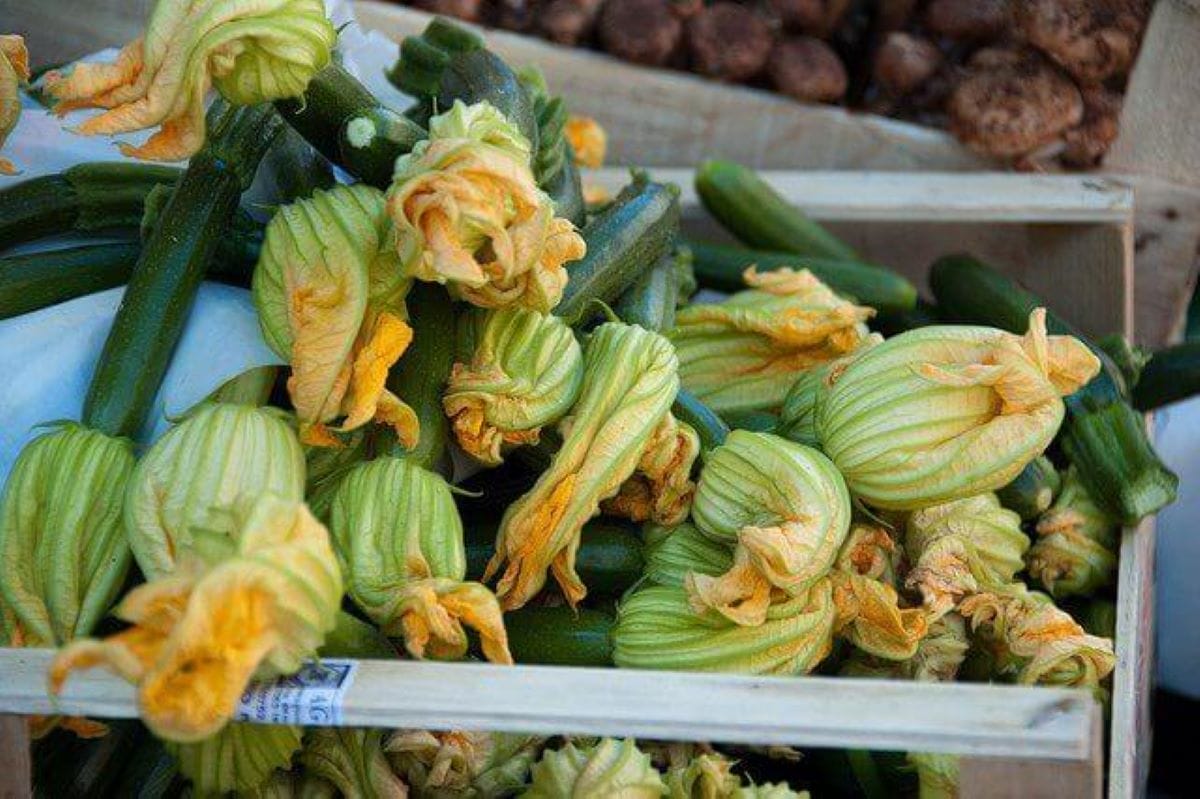
We adore eating fried zucchini flowers.
March
March is a transition month, when the snow begins to melt and the fields from Puglia to Tuscany are planted with spring and summer produce. This is the last month for fresh pumpkin and radicchio, but beets are already growing in the north and even asparagus begins to make its grand appearance, though it won’t hit its flavor peak for a couple more months. The star of March is the humble leek. Though you can find leeks cooked in dozens of different ways, leek and potato soup, maybe flavored with some pancetta, is the perfect dish to celebrate this spring onion.
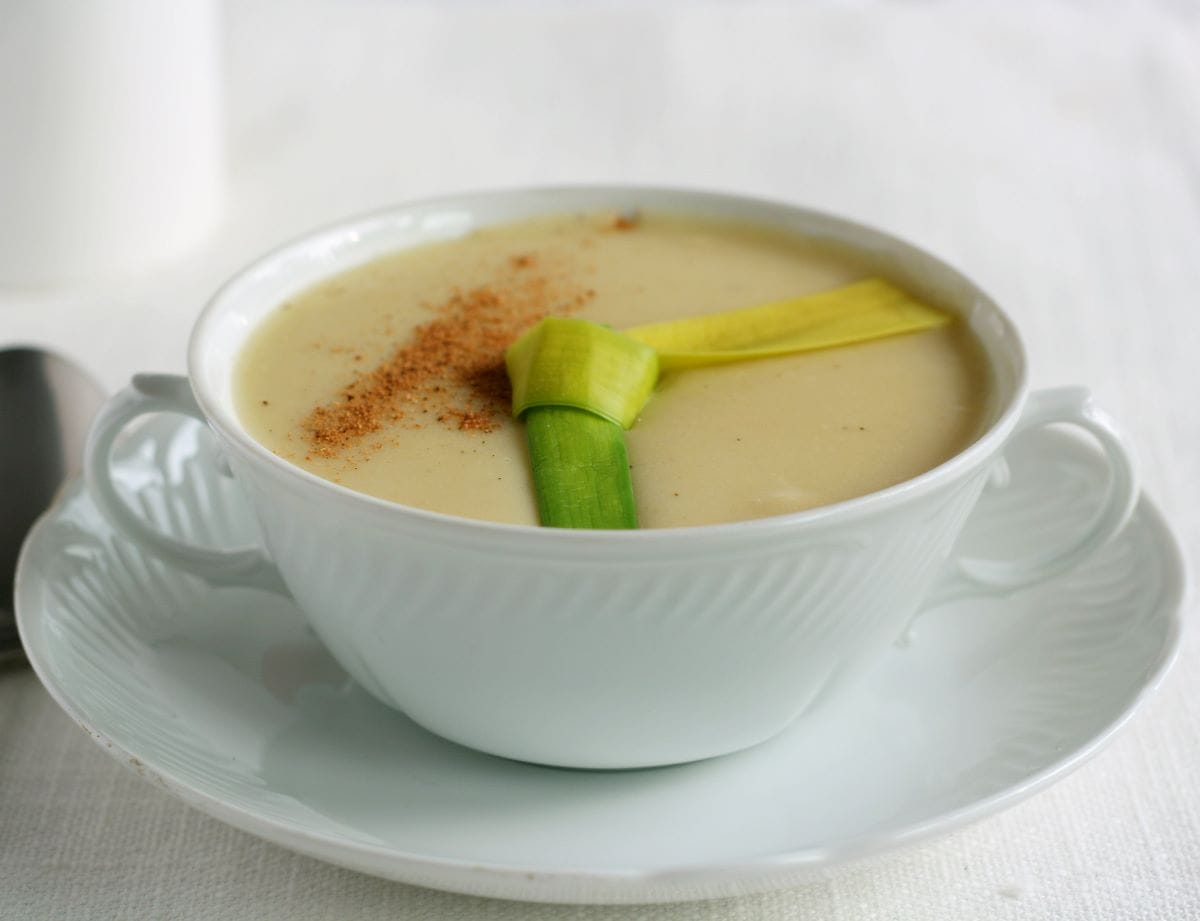
We love a bowl of creamy potato and leek soup. Photo credit: Anna
April
April is for artichokes – a beloved Italian vegetable that takes menus and markets by storm this month and is only around for the shortest of seasons. You can try them in soups, savory pies or risottos, but perhaps the best way to celebrate the artichoke is with carciofi alla guida, the Jewish-Roman way: tenderized then deep-fried.
May
Though they begin sprouting as early as March, we’d wait until May to dive into the asparagus dishes which are now guaranteed to be fresh and not frozen. Plus, asparagus’ flavor is at its peak in May when you can find both green, and the more coveted white varieties on menus throughout all of Italy. Try asparagus risotto, asparagus and steak, or asparagus pasta sauces. Asparagus, fava beans, and pecorino served together are the epitome of May in Rome, but in Milan they prefer their asparagi alla milanese with a boiled egg.
Cherries also grace the markets for a fleeting moment between May and June. If you see them, snatch ’em up – they will be plump and incredibly juicy.

One of the best fruits to eat in late spring are cherries. Don’t miss out!
Summer
What’s in season: cucumbers (cetrioli), eggplant (melanzane), cantaloupe/melon (melone), peppers (peperoni), zucchini (zucchine), zucchini flowers (fiori di zucca), basil (basilico), tomatoes (pomodori), peas (piselli), coconut (cocco), peaches (pesche), watermelon (cocomero/anguria), berries (frutta di bosco), plums (susini), figs (fichi)
It’s no secret that summertime brings an abundance of vegetables. Some, like zucchini, are at their height in all three months of the summer, depending on where you are in Italy. Italians use zucchini in a plethora of foods: on top of pizza, inside lasagna, baked into focaccia and as a regular side dish.

What’s better than a fresh peach on a summer day?
Another special treat if you’re around the Amalfi coast during the summer months is the Amalfi lemon. Generally considered (along with Sicilian lemons) to have the most vibrant and aromatic flavor in the world, these natural delicacies like lots of heat and tend to improve the later in the summer that they’re picked.
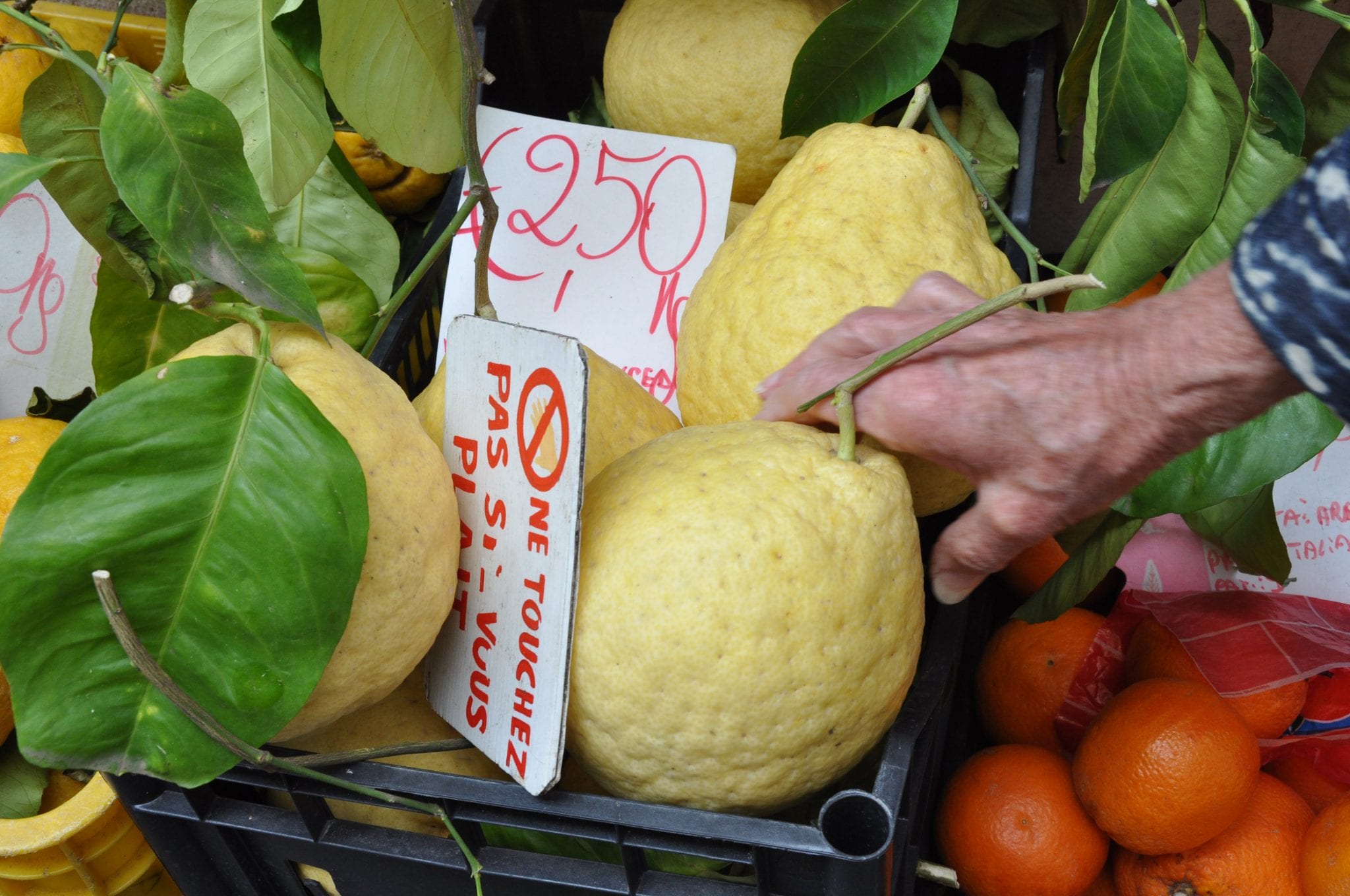
We know, we know, this says “don’t touch.” But just look at the size of these lemons.
June
Speaking of Italians’ love for zucchini, take advantage of the start of the season’s zucchini and pumpkin flower production and eat the flowers! Fior di zucca is a perfect appetizer served fried, but you can also enjoy the vegetable baked or cooked into a risotto.
Strawberries are another June favorite. Though they begin producing from May and go well into June, there’s nothing better than a delicious – and fresh – strawberry gelato on a hot June afternoon!
For a typical Italian treat, don’t miss figs, which have their first harvest at the end of June. Look for the big, purple variety.
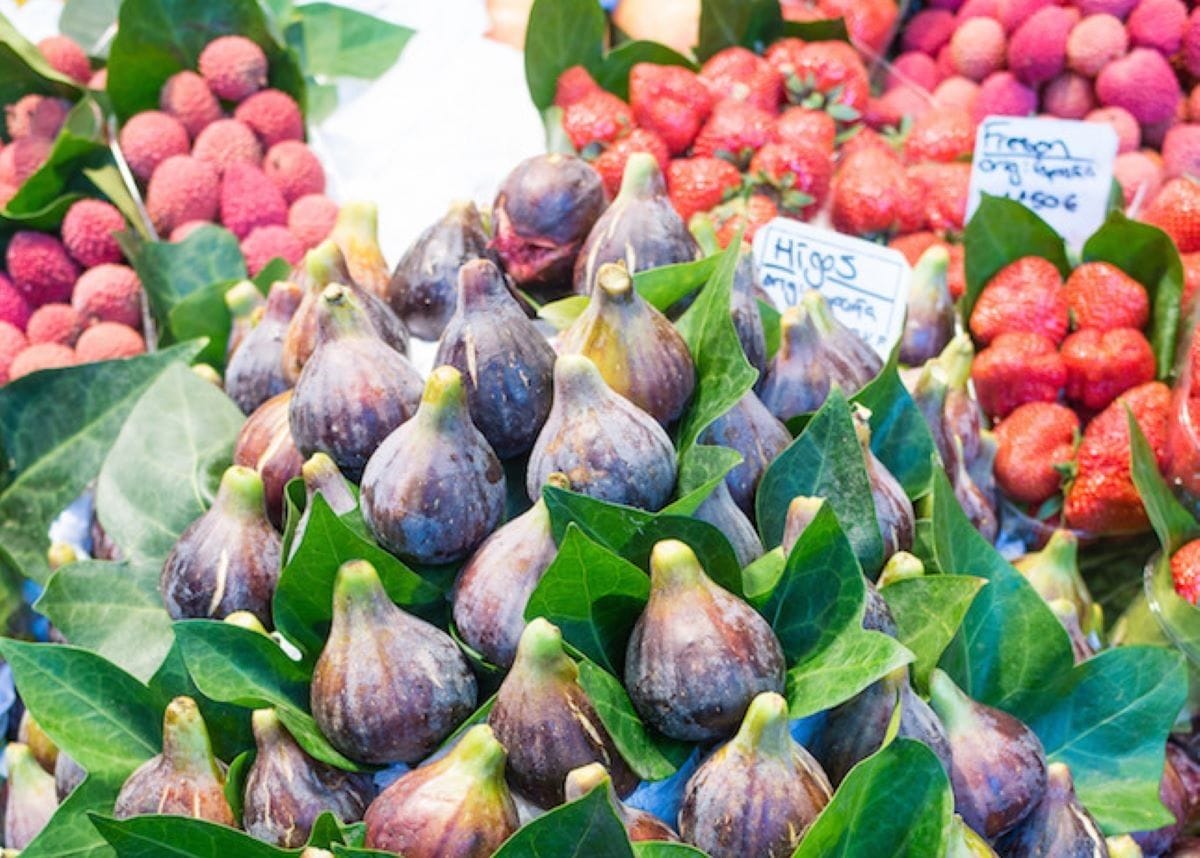
Figs, strawberries and raspberries are ripe for the picking this time of year. Photo credit: Erico Silva
July
Continue to enjoy summer vegetables all through July – the fruits are what change this month. Wild blueberries are in bloom and begin to fill menus along with other forest berries, apricots, and melons. Do as the Italians do and survive the heat of summer with a meal of fresh cantaloupe and prosciutto. It’s simple, fast and involves no heat whatsoever!
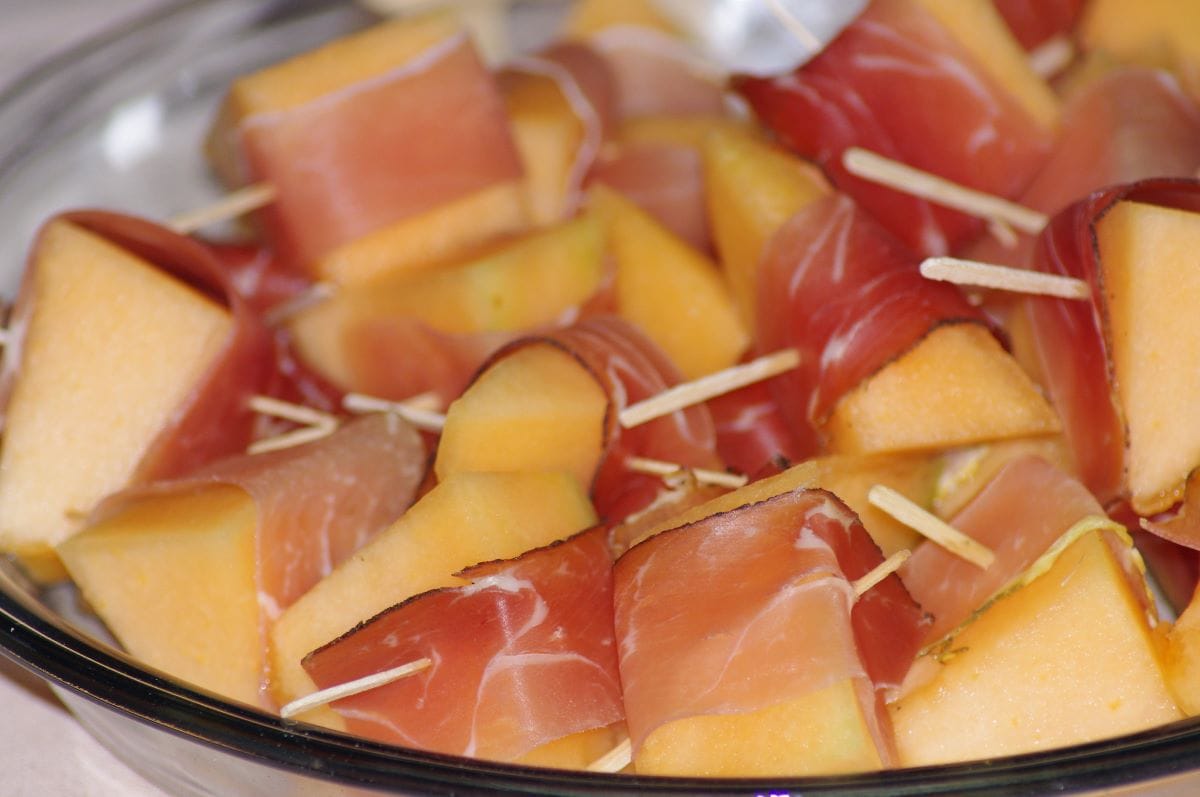
Classic, simple, and delicious.
August
August is the month in which all the summer fruits and vegetables hit maximum maturity and flavor levels. Take your pick but remember that tomatoes and eggplants reign supreme. In August they are both packed with flavor – none of that weak, watery, off-season taste – and each fill the menus around the country. Order the bruschetta, caprese salad or a tomato tart to enjoy the most flavor from fresh tomatoes. You can’t go wrong with an eggplant parmesan either, found throughout Italy, or a classic Sicilian caponata – an eggplant stew eaten both hot and cold. To cool down in the long afternoons enjoy a lemon granita or lemon gelato – especially if you are around the Amalfi Coast.
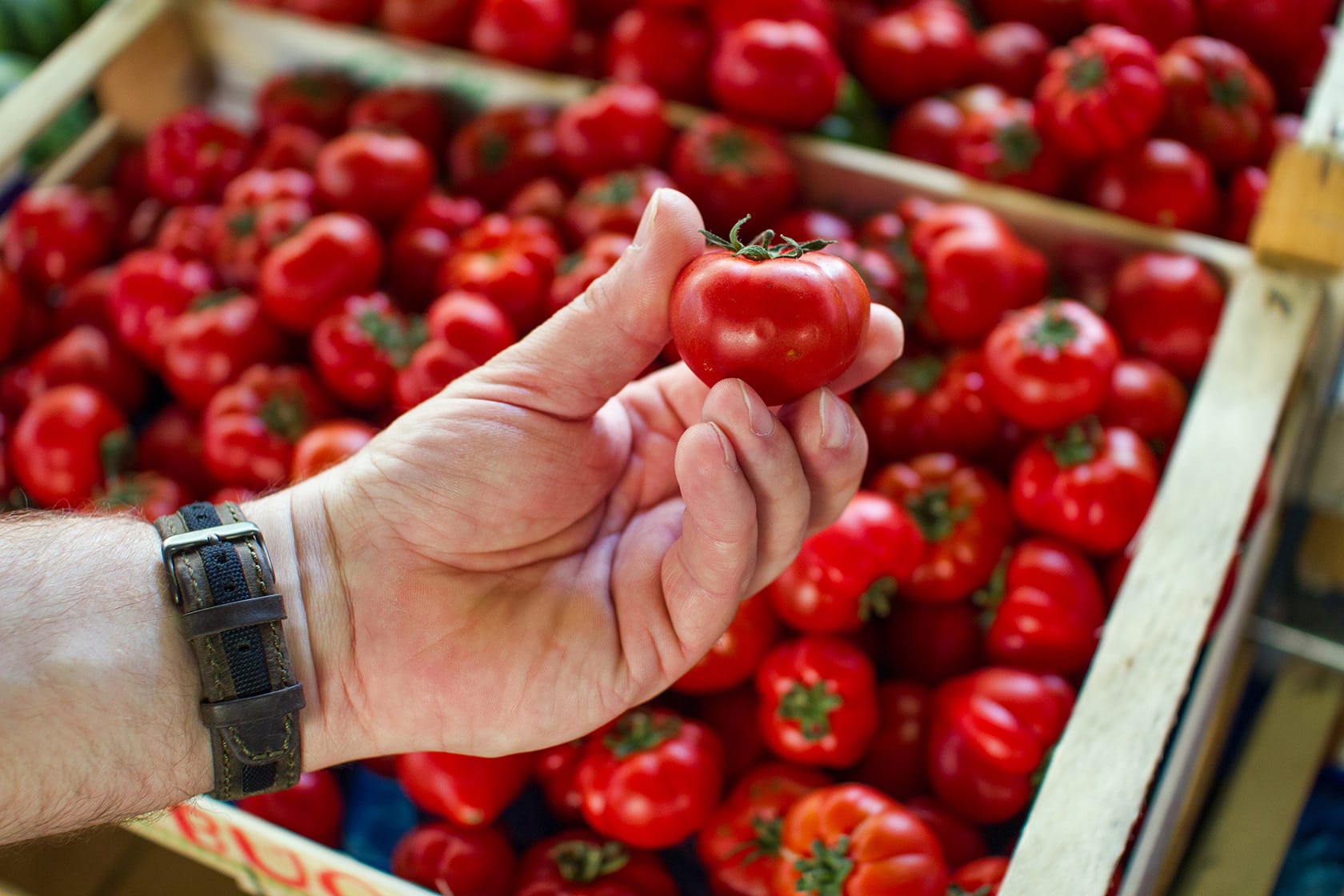
Just look at that red color on these beautiful tomatoes at the Sant’Ambrogio market.
Autumn
What’s in season: Fennel (finocchio), spinach (spinaci), mushrooms (funghi), truffles (tartufi), rabe (broccoletti), pumpkin (zucca), chestnuts (castagne), figs (fichi), prunes (prugne), grapes (uva), porcini mushrooms (porcini), apples (mele).
Ah, Autumn! The harvest of summer crops marks the start of this season which spans from the still-hot days of September through to the first chill of winter. Early fall foods in Italy often overlap with those of August and late fall foods overlap with those of December, depending on the year and temperature. Still, lovers of the season will enjoy mushrooms, truffles, and chestnuts – all evocative staples of the Italian autumn.
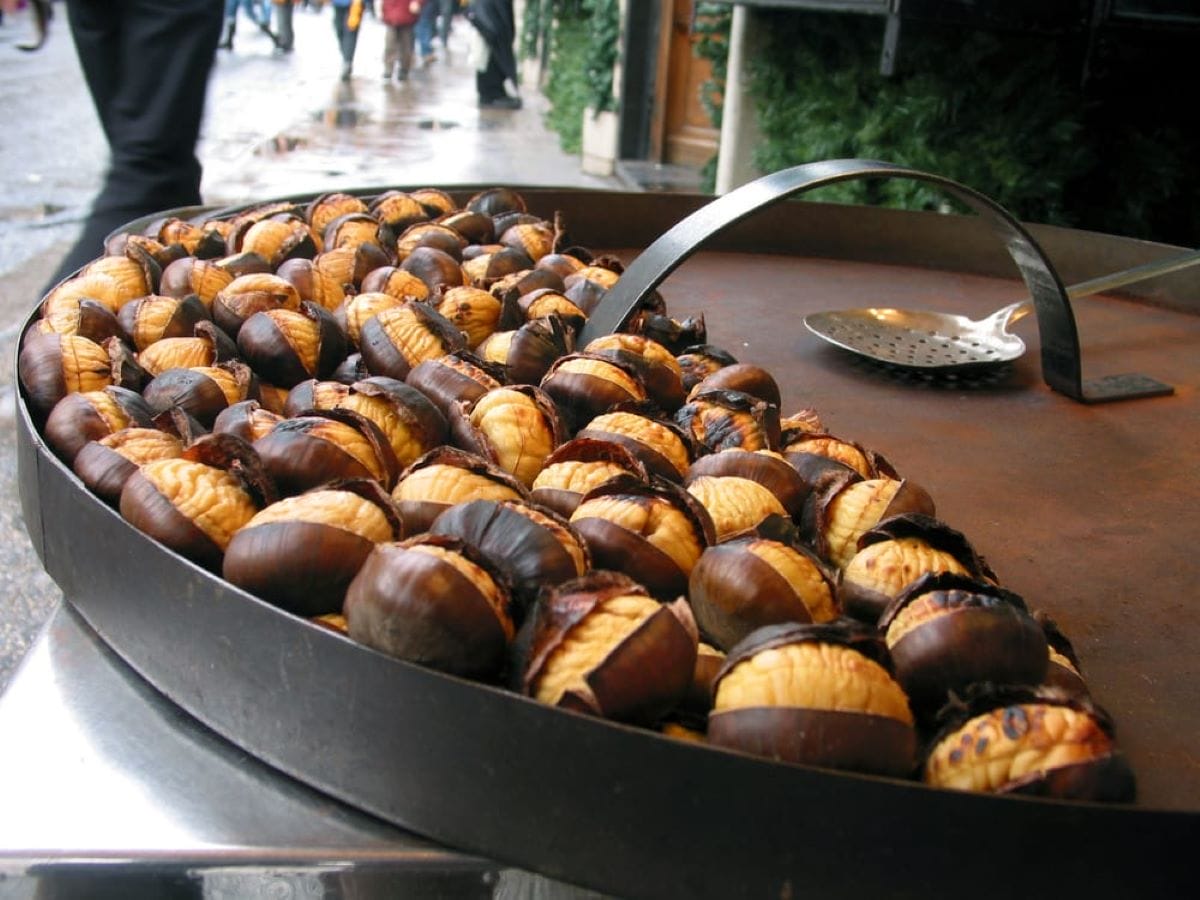
In the fall and winter, you’ll see plenty of chestnuts being sold on the streets.
September
September is a month of transition. The summer is winding down into fall and the harvest often offers the best of both worlds. The king of September is the porcini mushroom, which boasts a taste and texture that ennoble even the most rustic of pasta and pizzas. But true mushroom lovers simply eat large platters of roasted porcini all on their own. Though porcini foragers have likely been out since July, September is usually a boom month for the mushroom to hit markets and restaurants. It all depends on the heat and rain during a given year. Whether you are a lover of mushroom or not, this is one fungus that you have to try if you are eating in Italy in the late summer/autumn.
In the world of fruit, figs get their second harvest in the south of Italy, which specializes in the sweet, green varietals. Don’t be put off by their green skins – they’re ripe, and exploding with flavor. September also marks the start of the grape harvest. Though most of the vineyards are for wine, red, purple and green grapes for eating fill the markets.
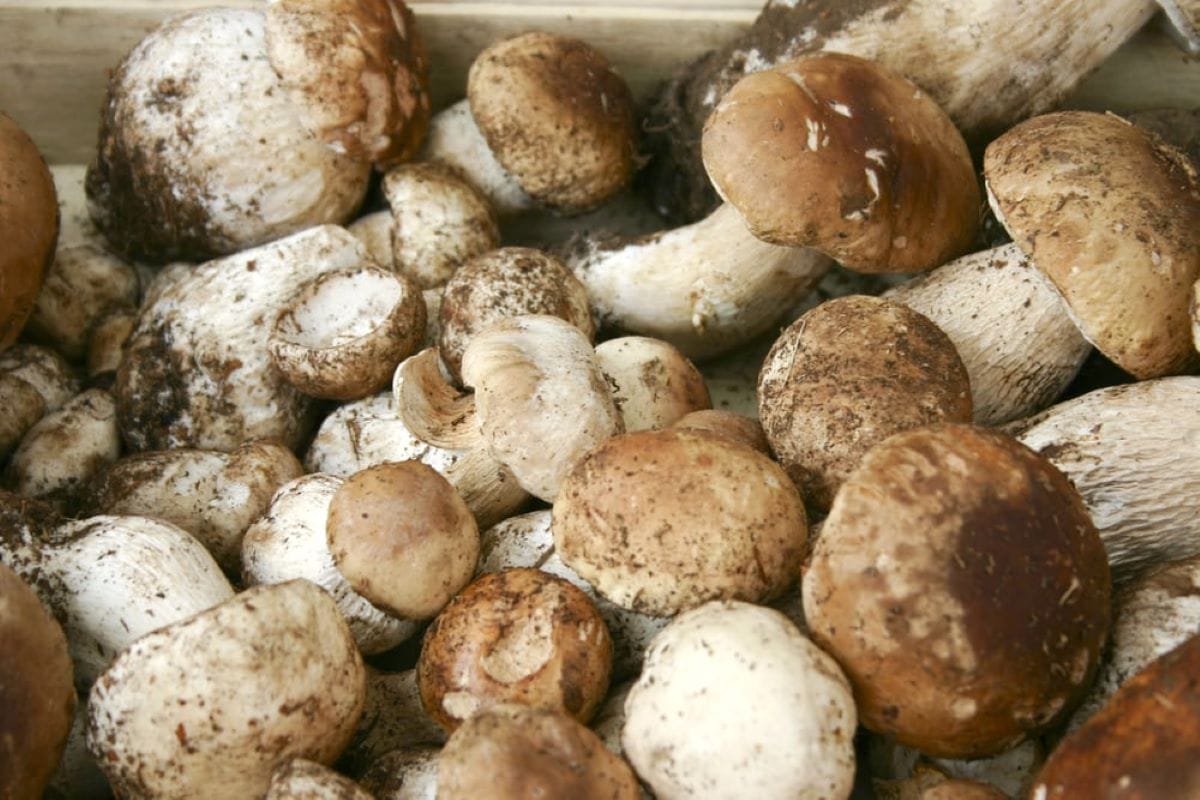
Porcini mushrooms are a foodie’s dream.
October
In central and southern Italy, October temperatures are still warm and humid, while in the north this month often brings the first snows. Finally, Italians begin to eat the summer’s more slow-growing fruits and vegetables. Pumpkins are at their height, and if you only ever eat them in pies you are in for a real treat. Find them in the classic tortellini or ravioli di zucca, especially in Emilia Romagna or Lombardy. October is also the first month in which you can find one of Italy’s most beloved street foods: roasted chestnuts. You can’t miss the pushcarts that sell them in many Italian town and cities, nor should you; they’re the perfect warm snack on a cool day and are a cultural institution.
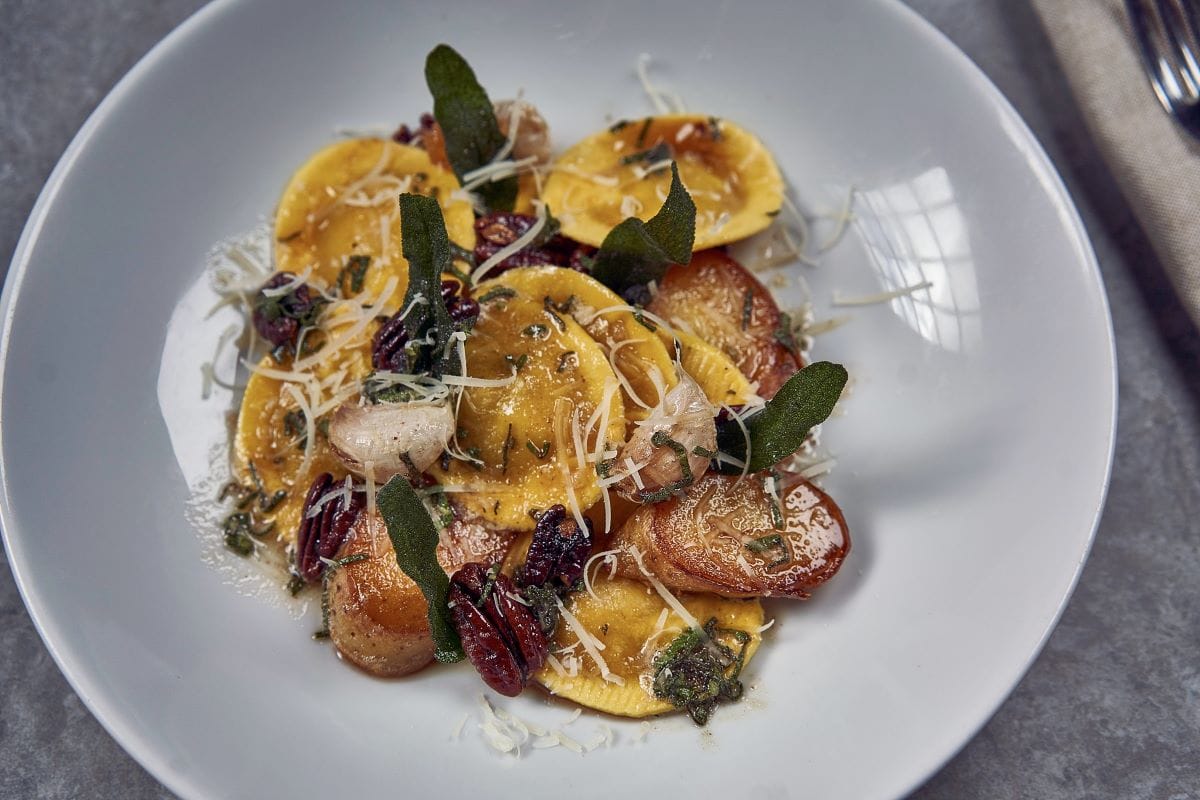
Ravioli di zucca is our favorite autumn pasta dish. Photo credit: Hotel du Vin & Bistro
November
November has a special place in the hearts of all Northern Italians because it is the peak month for one of the rarest and most expensive foods in the word: truffles. Though October marks the start of truffle season, the tartufo bianco d’Alba – perhaps the most famous of all the white truffles – is celebrated in a sagra that ends this month. Enjoy the pungent, earthy flavor of truffles shaved over pasta or an omelet, or stirred into a thick sauce for your steak.
Insider’s Tip: while you can get away ordering many foods out of season, never buy “fresh” truffles in any months outside of October, November, and December for the simple reason that they won’t be fresh – they will be frozen – and will taste like it.
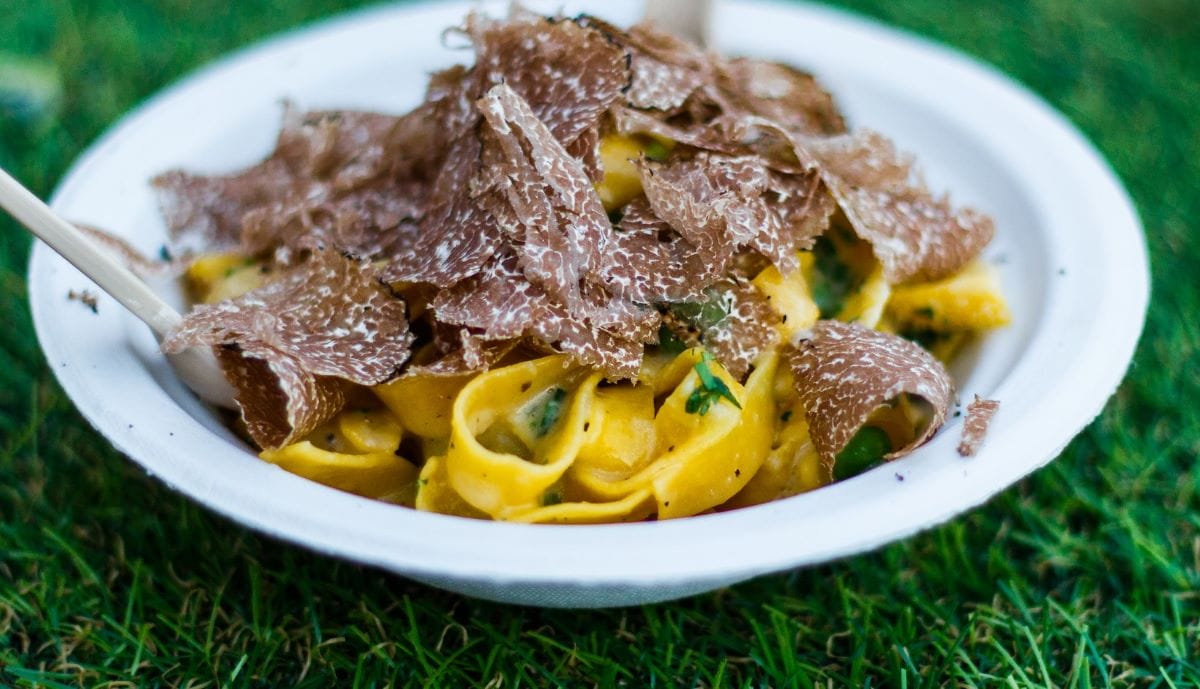
Pasta topped with truffles is a true Italian treat. Photo credit: Jaume Escofet
A parting thought
The advent of modern greenhouses and shipping technologies means that nearly all fruits and vegetables can be eaten year round. But when in Italy, you will be missing an immense opportunity to enjoy food as it was meant to be – seasonal, and prepared with an immense about of love and care at every step – if you don’t do as the Italians do and stick with the seasons. After all, eating strawberries only during strawberry season makes them all the sweeter, and truffles only during truffle season all the more pungent. What better way to experience one of the world’s greatest cuisines than to approach it with the care and reverence that it deserves?
Want to explore more of Italian cuisine on your next trip to Italy? Check out our food tours in Rome, Florence, Venice, and Bologna, where local guides will take you to the favorite traditional marketplaces and restaurants in each city. If you’re into Italian food, this is a must-do experience!
by Gina Mussio
View more by Gina ›Book a Tour

Pristine Sistine - The Chapel at its Best
€89
1794 reviews

Premium Colosseum Tour with Roman Forum Palatine Hill
€56
850 reviews

Pasta-Making Class: Cook, Dine Drink Wine with a Local Chef
€64
121 reviews

Crypts, Bones Catacombs: Underground Tour of Rome
€69
401 reviews

VIP Doge's Palace Secret Passages Tour
€79
18 reviews

Legendary Venice: St. Mark's Basilica, Terrace Doge's Palace
€69
286 reviews









